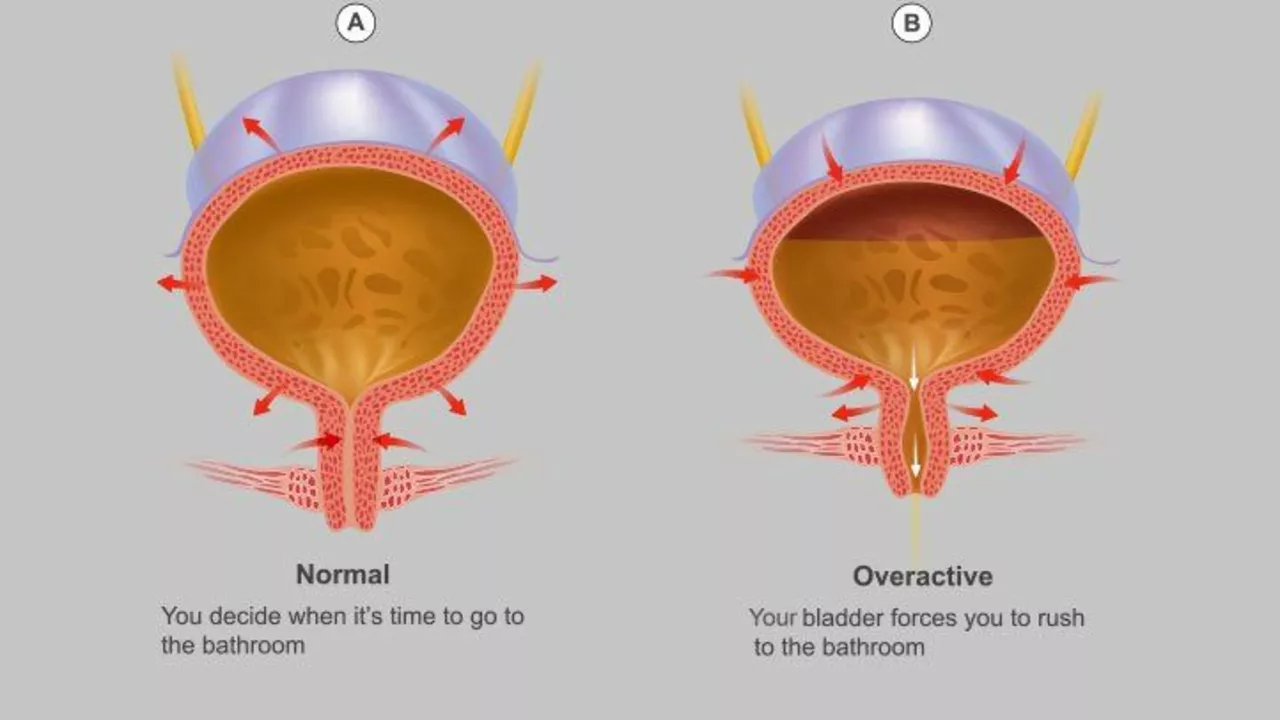Understanding Urinary Incontinence
Before we delve into the exercises that can help improve bladder control, it's important to understand what urinary incontinence is all about. It is a common and often embarrassing problem, but it's crucial to remember that it's not an inevitable part of aging. Urinary incontinence is simply a loss of bladder control, which results in an involuntary leakage of urine. It can range from a slight loss of urine when you cough or sneeze to having an extremely strong and sudden urge to urinate that you can't control.
Types of Urinary Incontinence
There are several types of urinary incontinence, including stress incontinence, urge incontinence, overflow incontinence, and functional incontinence. Stress incontinence occurs when you exert pressure on your bladder by coughing, sneezing, laughing, exercising, or lifting something heavy. Urge incontinence is characterized by a sudden, intense urge to urinate, followed by an involuntary loss of urine. Overflow incontinence is a constant dribbling of urine, usually because the bladder isn't emptying completely. Functional incontinence is a physical or mental impairment that keeps you from making it to the toilet in time.
The Importance of Pelvic Floor Muscles
A key player in bladder control are your pelvic floor muscles. These muscles support the bladder and help control the urinary sphincter. When these muscles are weak, it can lead to urinary incontinence. Factors such as aging, childbirth, and being overweight can weaken these muscles. However, the good news is that you can strengthen your pelvic floor muscles through exercises, which can improve bladder control and reduce urinary incontinence symptoms.
Introduction to Kegel Exercises
The most well-known exercise for strengthening the pelvic floor muscles is the Kegel exercise. Named after Dr. Arnold Kegel, who first developed them, these exercises involve repeatedly contracting and then relaxing the pelvic floor muscles. They can be done anytime and anywhere. The trick is in identifying the right muscles to engage. A good way to identify these muscles is by trying to stop your urine flow midstream. The muscles you use to do this are the ones you need to strengthen.
How to do Kegel Exercises
To perform Kegel exercises, start by emptying your bladder. Then, sit or lie down and tighten your pelvic floor muscles for 5 seconds. Relax for 5 seconds. Repeat this 10 times, three times a day. Remember not to flex the muscles in your abdomen, thighs, or buttocks, and breathe freely during the exercises. As your pelvic floor muscles get stronger, gradually increase the time you hold the contraction and the number of repetitions.
Bladder Training Techniques
Bladder training is another approach to improve bladder control. This involves gradually extending the time between visits to the toilet, helping the bladder to hold more urine without leakage or urge. Start by noting down the times you urinate and leak urine in a 'bladder diary'. Then, try to extend the time between bathroom visits by 15 minutes. Gradually increase this until you're urinating every 3 to 4 hours.
Yoga for Bladder Control
Yoga, with its focus on mindful movement and breathing, can also help improve bladder control. Some yoga poses strengthen the pelvic floor muscles, while others help reduce stress and anxiety, which can trigger urge incontinence. Poses like the Bridge Pose, Warrior II, and Chair Pose are particularly beneficial. It's recommended to practice under the guidance of a certified yoga instructor, especially if you're new to yoga.
Diet and Lifestyle Changes
In addition to exercises, diet and lifestyle changes can also help improve bladder control. Limiting bladder irritants like caffeine, alcohol, and spicy foods can help. Staying hydrated, maintaining a healthy weight, and regularly exercising can also reduce urinary incontinence symptoms. If you smoke, consider quitting, as smoking can worsen incontinence problems.
When to Seek Medical Help
If you're experiencing urinary incontinence, it's important to seek medical help. While the exercises and techniques mentioned above can help, they're more effective when combined with medical treatment. Urinary incontinence can sometimes be a symptom of an underlying medical condition, like a urinary tract infection or bladder stones. Moreover, if incontinence is affecting your quality of life, causing you distress, or if you're not seeing any improvement despite trying these exercises and techniques, don't hesitate to consult a healthcare professional.




Wilson Roberto on 27 June 2023, AT 21:26 PM
When you pause to consider the subtle dialogue between mind and muscle, the simple act of a Kegel becomes a meditation on control. Each contraction is a reminder that we hold agency over our bodies, even when society tells us otherwise. Keep the rhythm steady, breathe naturally, and let the discipline spill over into other facets of life. Consistency is the quiet hero here, and soon you’ll notice a sense of empowerment that transcends the bathroom.